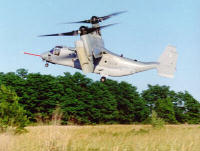
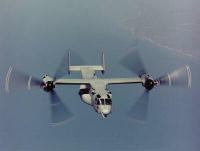
It has long been a dream of aircraft designers to create an airplane that not only can fly long ranges at high speeds and carry heavy cargo, but can also take off, hover and land like a helicopter. Such a plane would have the flexibility to handle many different types of military missions and would also have civilian and commercial uses.


The V-22 Osprey is such a vehicle. This versatile craft has been developed for the military by Bell-Boeing aircraft. Through the use of a tilt rotor, the Osprey can take off and land like a helicopter, but convert to a turboprop airplane while in flight. The aircraft's rotors can fold, and the wings can rotate so it can be stored on an aircraft carrier.
Despite the Osprey's military potential, a series of crashes have resulted in the grounding of the plane. Subsequent investigations could terminate the 20-year, $38-billion program just before the Osprey is supposed to go into full production and usage.
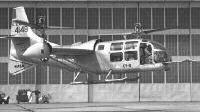
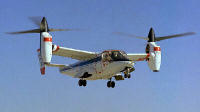
After the XV-3 program proved that the tilt-rotor concept was feasible, Bell developed the XV-15 tilt-rotor that was tested by NASA. In July 1979, the XV-15 became the first aircraft to tilt from helicopter to airplane and back. It was also capable of traveling 346 miles per hour (557 kph) in airplane mode. The success of the tests lead to the expansion of the program, which was subsequently renamed the V-22 Osprey. There are three configurations of the Osprey depending upon what it's being used for, such as search-and-rescue, medium-range assault or long-range special operations. While three branches of the U.S. Armed Forces -- the Marines, Navy and Air Force -- will use the Osprey, Bell is also exploring its design for possible civilian uses.
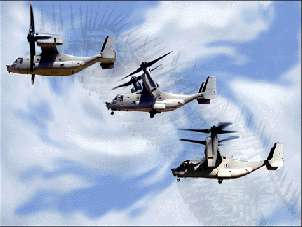
The Osprey has two, large, three-bladed rotors that rotate in opposite directions and produce lift. Because the rotors turn in opposite directions, there is no need for a tail rotor to provide stability as in a helicopter. The wing tilts the rotors between airplane and helicopter modes and generates lift in the airplane mode. The Osprey can convert smoothly from helicopter mode to airplane mode in as few as 12 seconds.
The major advantages of the Osprey over a helicopter are:
Longer range - The Osprey can fly from 270 to 580 miles (453 to 933 km).
Higher speed - The Osprey's top speed is 315 mph (507 kph), which is twice as fast as a helicopter's top speed.
Increased cargo capacity - The Osprey can carry 10,000 pounds (4,536 kg) of cargo or 24 troops.
The advantage of the Osprey over an airplane is that it can take off, hover and land like a helicopter. This makes is more versatile than an airplane for such missions as moving troops to remote areas, especially those without landing strips, or conducting long-range rescue operations at sea.
In the next section, we'll take a look at the Osprey's systems.
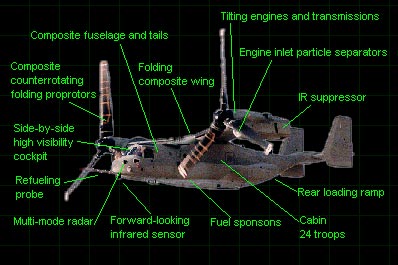
Propulsion
As mentioned above, the Osprey has two rotors with three-bladed, 38-ft (11.6-m) propellers. Each propeller is driven by an Allison AE 1107C turboshaft engine that is capable of producing over 6,000 horsepower. Each engine drives its own rotor and transfers some power to a mid-wing gear box. This gear box drives the tilting mechanism. In the event of an engine failure, the Osprey is capable of running on only one engine. In this case, power from the remaining engine is distributed to the two rotors through an interconnecting drive shaft.
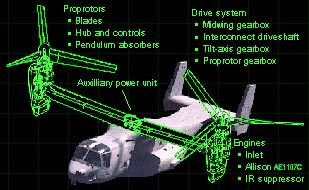
Fuel
The Osprey has 16 fuel tanks, 10 integrated into the wings and six in the fuselage. The feed tanks directly supply the engines with fuel from the other tanks, and fuel transfer is automatic. As the fuel flows from the tanks, pressurized nitrogen gas fills the tanks to reduce the possibility of fire. Depending upon the configuration of the Osprey, it can hold from 1,450 to 3,640 gallons (5,489 to 13,779 liters) of fuel.
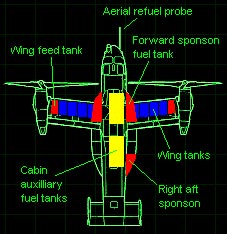
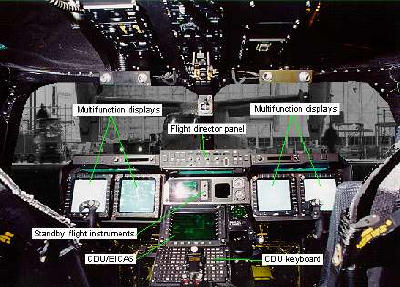
Communications
The Osprey is equipped with multi-band radios (AM, FM, UHF, VHF) for voice transmission and radio reception. It also has navigational beacons and radios, radar altimeters and an internal intercom/radio system for communications among the crew and troops onboard.
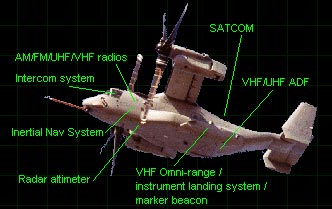
Payload
The Osprey can hold up to 24 troops and carry up to 20,000 lb (9,072 kg) in its cargo bay, which is 5.7 ft wide by 5.5 ft high by 20.8 ft long (1.72 x 1.68 x 6.35 m). The cargo bay has fold-down seats along the walls and a ramp that is used to load or deploy cargo and troops. Deployment can also take place in the air by parachute. In addition to the 20,000-lb load in the cargo bay, the Osprey has an external hook-and-winch system that allows it to carry up to 15,000 lbs (6,803 kg) of cargo in tow.
Stowage
When the Osprey lands on the deck of a ship, it can be folded up for down-time. The blades and the wings are both foldable. The sequence is shown below:
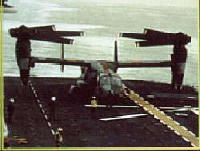
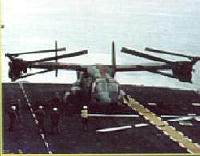
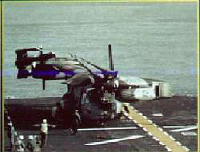
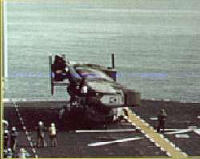

When the Osprey is ready to take off, its rotors are in a vertical position. With the rotors mounted on the wings, it looks like a two-bladed helicopter. When the Osprey is in helicopter mode (on takeoff, landing and when hovering), the rotors generate lift. While in flight, the Osprey's rotors move down to a horizontal position. In this position, it is the wings that generate lift, like on a traditional airplane, and the rotors function as they do in a propeller aircraft. The Osprey lands like a helicopter by reversing the process, raising the rotors from a horizontal to a vertical position.